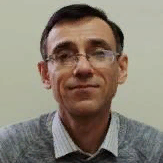
Farzin Salmasi
Work place: Department of Water Engineering, Faculty of Agriculture, University of Tabriz, Tabriz 51666 IRAN
E-mail:
Website:
Research Interests: Physics, Physics & Mathematics, Computational Physics
Biography
Dr. Farzin Salmasi, Department of Water Engineering, Faculty of Agriculture, University of Tabriz, Tabriz, Iran. He is a Professor in Department of Water Engineering, University of Tabriz, Iran. He was born in Tehran, Iran, 1970. He received the B.Sc. degree in Irrigation and drainage engineering from the University of Tabriz, Iran, in 1992 and M.Sc. degree in Hydraulic structures engineering specializing in mathematical modeling of ground water from Shahid Chamran University (SCU), Ahvaz, Iran, in 1996 and He received Ph.D. degree in Hydraulic structures engineering specializing in physical modeling of stepped spillways from Shahid Chamran University (SCU), Ahvaz, Iran, in 2005. His doctoral thesis was on “Hydraulic investigation and physical modeling on stepped spillways”. His main scientific interests are: physical modeling of weirs in irrigation canals, dam spillways, seepage analysis under diversion dams and through earth dams, pump stations, design of earth and gravity dams and finite element analysis with commercial software including Geo-studio (Seep/w) and ANSYS-Fluent. He has authored and co-authored about 150 national and international journal articles and participated in 20 national and international conferences. He regularly serves as a reviewer for 10 high impact-factor journals in engineering and material science, among them: Soil and Water (University of Tabriz), Civil Engineering (University of Tabriz), Journal of Irrigation and Drainage Engineering (ASCE), Journal of Hydraulic Engineering (ASCE), Flow Measurement and Instrumentation, ISH Journal of Hydraulic Engineering and Journal of Hydrology. In addition to these, he has performed five scientific projects supported from “University of Tabriz -Iran”.
Author Articles
Mathematical Based Implicit and Explicit Finite Difference Techniques for Solving the Ground Water Flow Equations Using Spreadsheets
By Farzin Salmasi Mohammad Taghi Sattari Halit Apaydin
DOI: https://doi.org/10.5815/ijmsc.2022.04.01, Pub. Date: 8 Oct. 2022
In countries with arid and semi-arid climate such as Iran with water constraints, the use of groundwater resources is very important. There are various mathematical based methods and software packages for modelling groundwater resources. This paper uses groundwater flow problems to illustrate possible approaches for providing the environment of active teaching. Mathematical models supported by software applications facilitate the gaining of an insight into the physical behaviors by investigating a host of scenarios and events but they are poor in training critical thinking for encapsulating the hardcore mathematical equations describing the problems. Whilst software engineering has transformed the intellectual capitals accumulated between the 20th century and the middle of the 21th century into working tools, it has the drawback of encapsulating core mathematics away from common experience of the students and practitioners. This diminishes critical thinking in a world of increasing risks and ought to be taken a serious side effect of software engineering. This paper suggests a solution by building up a library of solvers using spreadsheets, with the effect that the encapsulated knowledge of building modelling solvers can permanently be brought to life in education with the active learning culture. Implementation was carried out in the same way for steady state flow as well as explicit 2D and 3D finite difference approximation for transient flow. This study raises concern about the encapsulated body of knowledge contributed to the emergence and the establishment of modelling software applications since 1980. This body of knowledge comprise a deeper understanding of equations of often partial differential equations describing physical problems, as well as their numerical transformation into systems of equations and their subsequent properly- and improperly posed systems of equation in terms of their assumptions and quality conditions. The outcome is the emergence of a cookbook mentality among the new breed of mathematical modelers without any critical thinking. The results revealed that spreadsheet can be used with the aid of the Solver function. This idea capitalized on the capabilities of the net-generation and opens up the possibility for the emergence of bottom-up open source modelling platforms.
[...] Read more.Other Articles
Subscribe to receive issue release notifications and newsletters from MECS Press journals